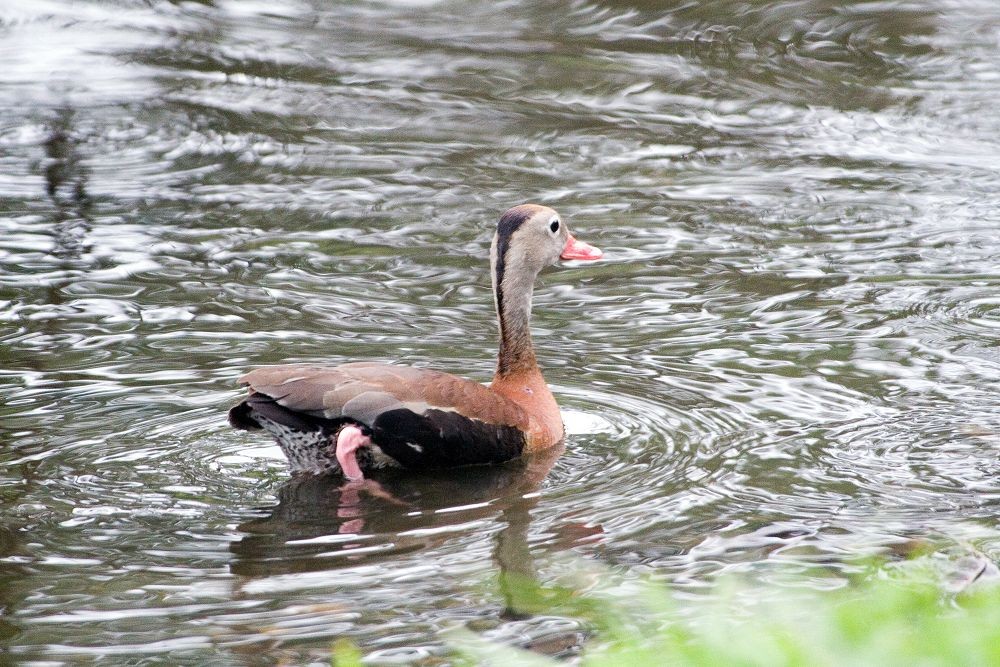Black-bellied Whistling-duck
A species of Whistling-ducks, Also known as Black Bellied Tree Duck Scientific name : Dendrocygna autumnalis Genus : Whistling-ducks
Black-bellied Whistling-duck, A species of Whistling-ducks
Also known as:
Black Bellied Tree Duck
Botanical name: Dendrocygna autumnalis
Genus: Whistling-ducks
Content
Description People often ask General Info
 Photo By Photo by David J. Stang , used under CC-BY-SA-4.0 /Cropped and compressed from original
Photo By Photo by David J. Stang , used under CC-BY-SA-4.0 /Cropped and compressed from original Description
It has a long red bill, long head and longish legs, pale gray head and mostly gray-brown plumage. The belly and tail are black, and the body plumage, back of the neck and cap are a rich chestnut brown. The face and upper neck are gray, and they sport a thin but distinct white eye-ring. The extensive white in the wings is obvious in flight, less so on the ground; it is formed by the secondary remiges while the primaries are black; the wing-coverts are brown. Males and females look alike. 
Size
46 - 53 cm
Life Expectancy
8 years
Nest Placement
Cavity
Clutch Size
9 - 18 eggs
Incubation Period
1 - 2 broods
Number of Broods
25 - 30 days
Nestling Period
10 - 13 days
Feeding Habits
Black-bellied Whistling-duck's diet consists mostly of plant material like grasses, grains, and seeds from smartweed to millet. They supplement with aquatic animals—snails, insects, spiders. Typically nocturnal foragers, they may feed any time, often dabbling in shallow water or scavenging in harvested fields for leftovers.
Habitat
Black-bellied Whistling-duck thrive in a variety of wetland habitats, typically favoring shallow freshwater ponds, fresh marshes, and lagoons. These birds are accustomed to warmer climates and can be found at low altitudes, frequently nesting in nearby thickets or tree stands such as mesquite, hackberry, willow, and live oak. Black-bellied Whistling-duck often forage in fields and lawns, and their preferred aquatic environments usually feature abundant vegetation, including water hyacinth, water lilies, and cattails. In tropical regions, they are also known to inhabit mangroves and rivers.
Nest Behavior
Black-bellied Whistling-duck demonstrates flexible timing for nest-building, laying eggs directly onto the gathered materials at the site. Both genders participate in nest site selection. Parental care involves joint efforts from both parents throughout the nesting period.
Nest Characteristics
Black-bellied Whistling-duck's nests are typically found in tree hollows from broken limbs or decayed trunks, and they also adapt well to nest boxes or ground locations with protective vegetation like willows or cacti. No additional nest is constructed; eggs are laid on accumulated natural debris with cavity openings of 5–12 inches.
Dite type
Herbivorous
People often ask
General Info
Feeding Habits
Bird food type
Bird Feeder Type

Platform
Sounds
Call
Recording location: Colombia
Call
Recording location: Venezuela
Behavior
Black-bellied Whistling-duck exhibit notable terrestrial tendencies, frequently perching on elevated structures and strolling on land, which distinguishes them from most duck species. Functioning as sociable creatures, they often congregate in large flocks and form monogamous pairs early in life. The daily regime of black-bellied Whistling-duck includes foraging, which is sometimes detrimental to agricultural areas, specifically corn and rice fields. Regular activities also encompass a rich repertoire of courtship and territorial displays, reflective of their complex social structure. Females may engage in 'egg-dumping,' laying eggs in the nests of conspecifics. Their nesting sites, however, do face threats from various predators, and adult black-bellied Whistling-duck must be vigilant of avian hunters like Great Horned Owls.
Species Status
The black-bellied whistling duck is listed as a species of least concern by the International Union for Conservation of Nature (IUCN); its global population is estimated at 1,100,000–2,000,000 birds and increasing. 
Scientific Classification
Phylum
Chordates Class
Birds Order
Waterfowl Family
Geese Genus
Whistling-ducks Species
Black-bellied Whistling-duck